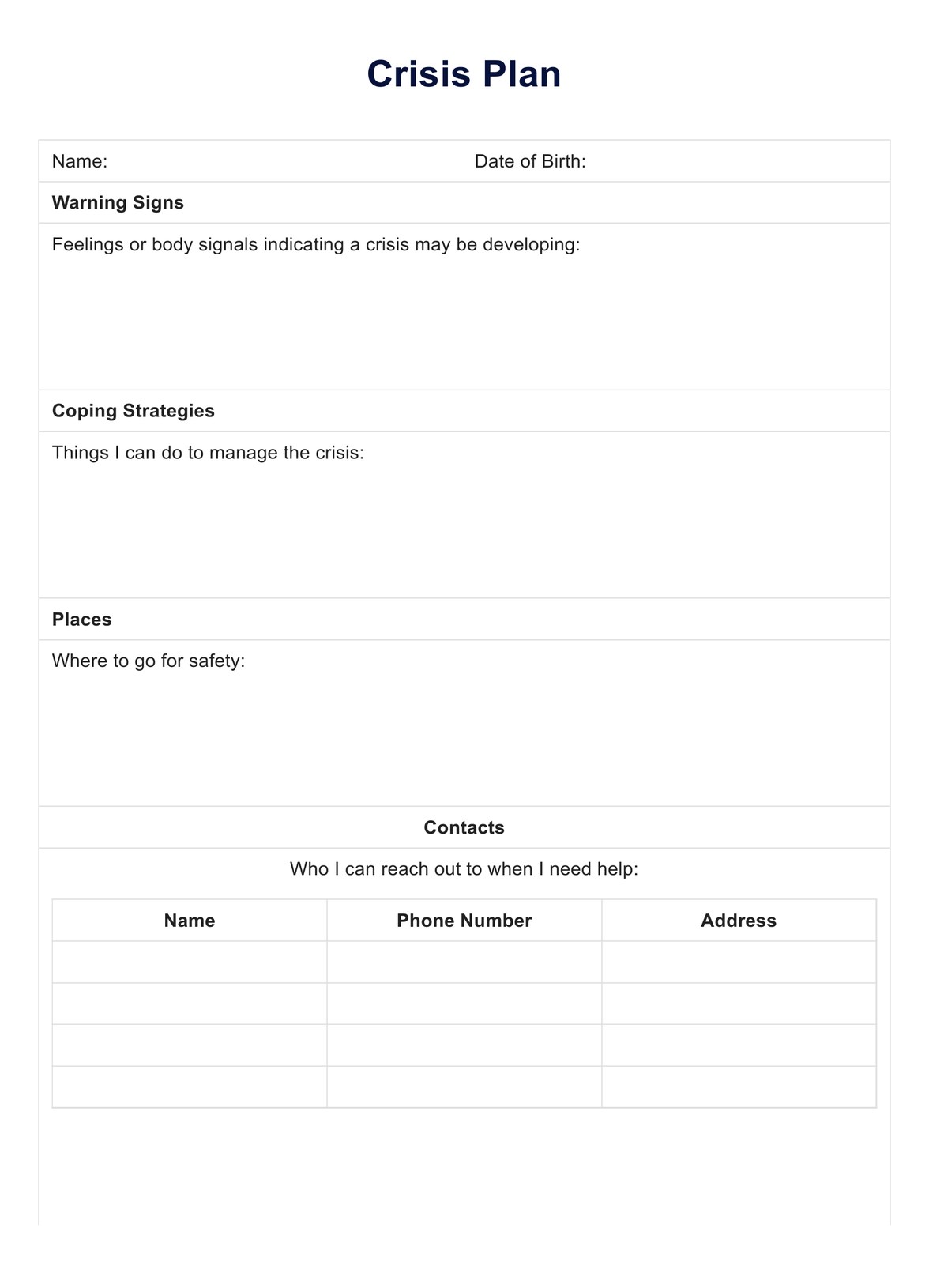You can begin creating a Crisis Plan by identifying the potential signals that a crisis may occur, such as feelings, followed by steps to manage the crisis and contacts you can reach out to. This process is broken down in our customizable Crisis Plan Template that you can use as a reference.

Crisis Plan
Rest easier knowing you are prepared to handle any crisis or adverse situation using our Crisis Plan.
Use Template
Crisis Plan Template
Commonly asked questions
Crisis Plan Templates are used in various scenarios requiring a way to manage and prevent crises. A client typically creates the plan alongside a healthcare professional, but copies of the plan may be given to trusted support networks if the client wishes.
The template provides a breakdown of manageable steps to mitigate or prevent a crisis. It includes risk identification, crisis management, safety steps, and contacts.
EHR and practice management software
Get started for free
*No credit card required
Free
$0/usd
Unlimited clients
Telehealth
1GB of storage
Client portal text
Automated billing and online payments











